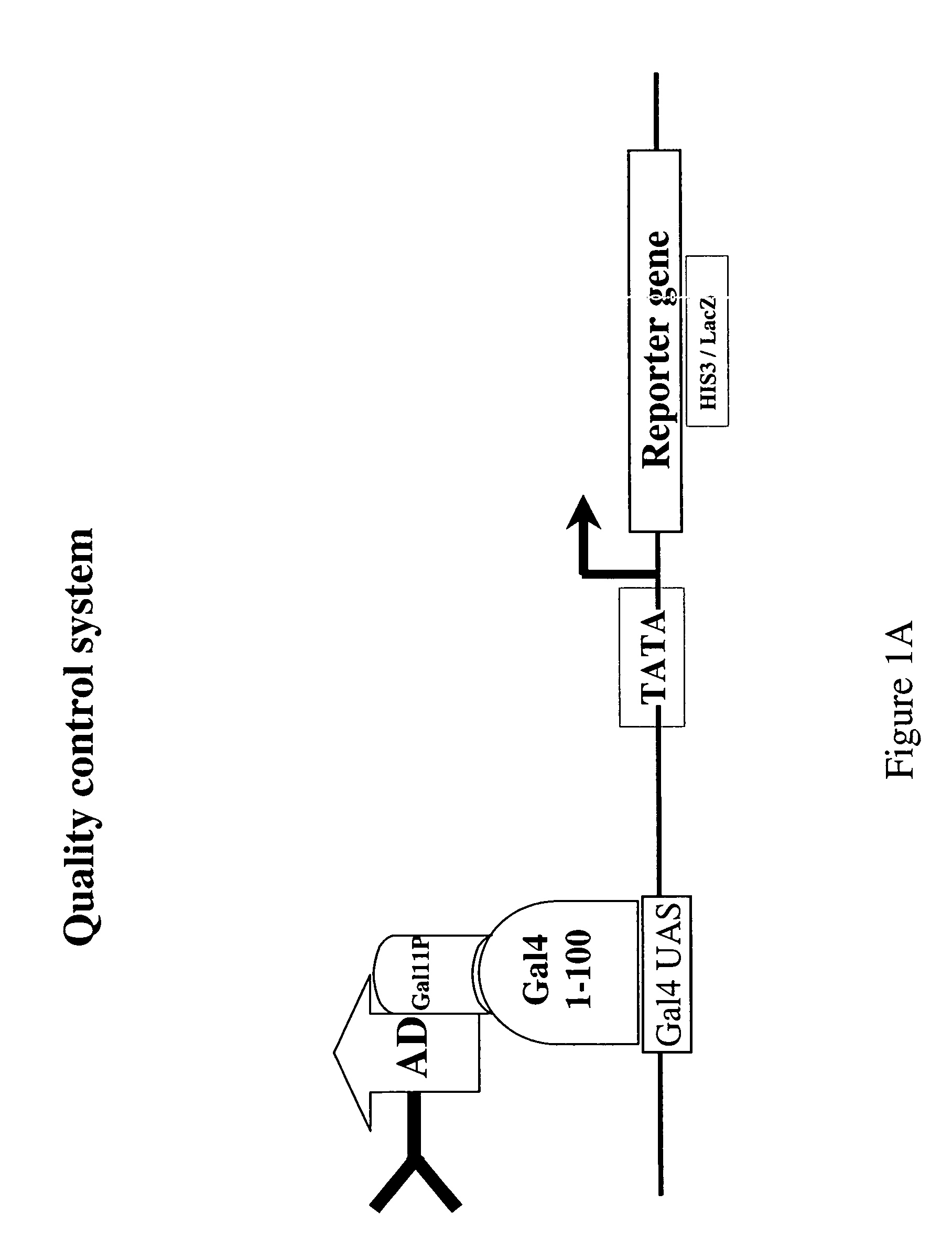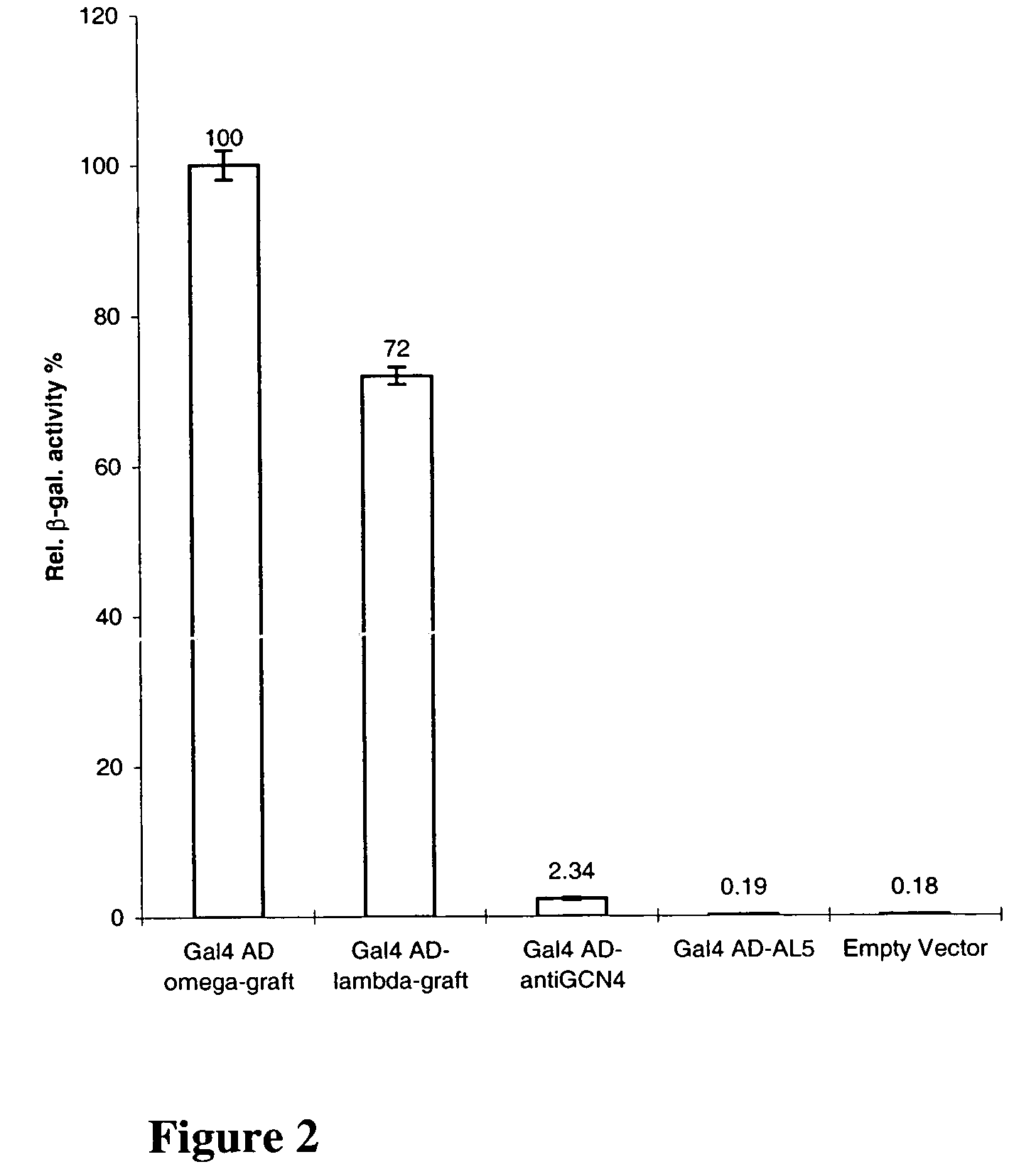Intrabodies with defined framework that is stable in a reducing environment and applications thereof
a defined framework and intrabody technology, applied in the field of single chain fusion, can solve the problems of unsuitable application of intrabody, non-functional aggregates, and completely unpredictable whether such an intrabody is functional within the cell, and achieve the effect of stable and soluble in the reducing environmen
- Summary
- Abstract
- Description
- Claims
- Application Information
AI Technical Summary
Benefits of technology
Problems solved by technology
Method used
Image
Examples
examples
[0109]Design of CDR-Grafted Anti-GCN4 scFv Fragments
[0110]Cloning, Expression and Purification of scFv Fragments
[0111]All scFv fragments were in a VL-VH orientation with a 20-mer linker (GGGGSGGGGSGGGGSSGGGS) (Seq. Id. No. 4) and a C-terminal his5-tag.
[0112]The scFv fragments expressed in yeast were cloned into the pESBA-Act expression vector. The pESBA-Act vector is a Saccharomyces cerevisiae-E. coli shuttle vector. It contains a bacterial origin of replication and the amp resistance gene. Furthermore it contains the yeast TRP1 gene for transformation selection in S. cerevisiae. It is designed for high protein expression in yeast and therefore has the 2μ origin of replication ensuring high copy numbers in S. cerevisiae. In addition, it contains the strong constitutive actin promoter and the GAL11 transcriptional termination sequence separated by a multiple cloning site containing restriction sites for NcoI (covering translational initiation codon ATG), ApaI, StuI, three translation...
PUM
| Property | Measurement | Unit |
|---|---|---|
| dissociation constant | aaaaa | aaaaa |
| optical density | aaaaa | aaaaa |
| soluble | aaaaa | aaaaa |
Abstract
Description
Claims
Application Information
 Login to View More
Login to View More - R&D
- Intellectual Property
- Life Sciences
- Materials
- Tech Scout
- Unparalleled Data Quality
- Higher Quality Content
- 60% Fewer Hallucinations
Browse by: Latest US Patents, China's latest patents, Technical Efficacy Thesaurus, Application Domain, Technology Topic, Popular Technical Reports.
© 2025 PatSnap. All rights reserved.Legal|Privacy policy|Modern Slavery Act Transparency Statement|Sitemap|About US| Contact US: help@patsnap.com



